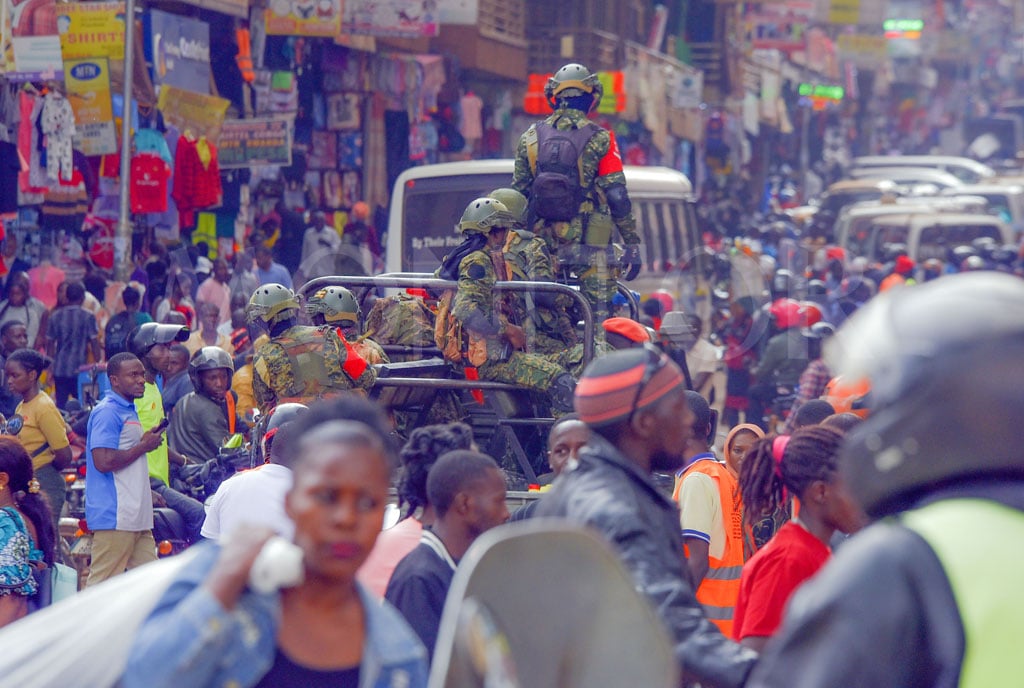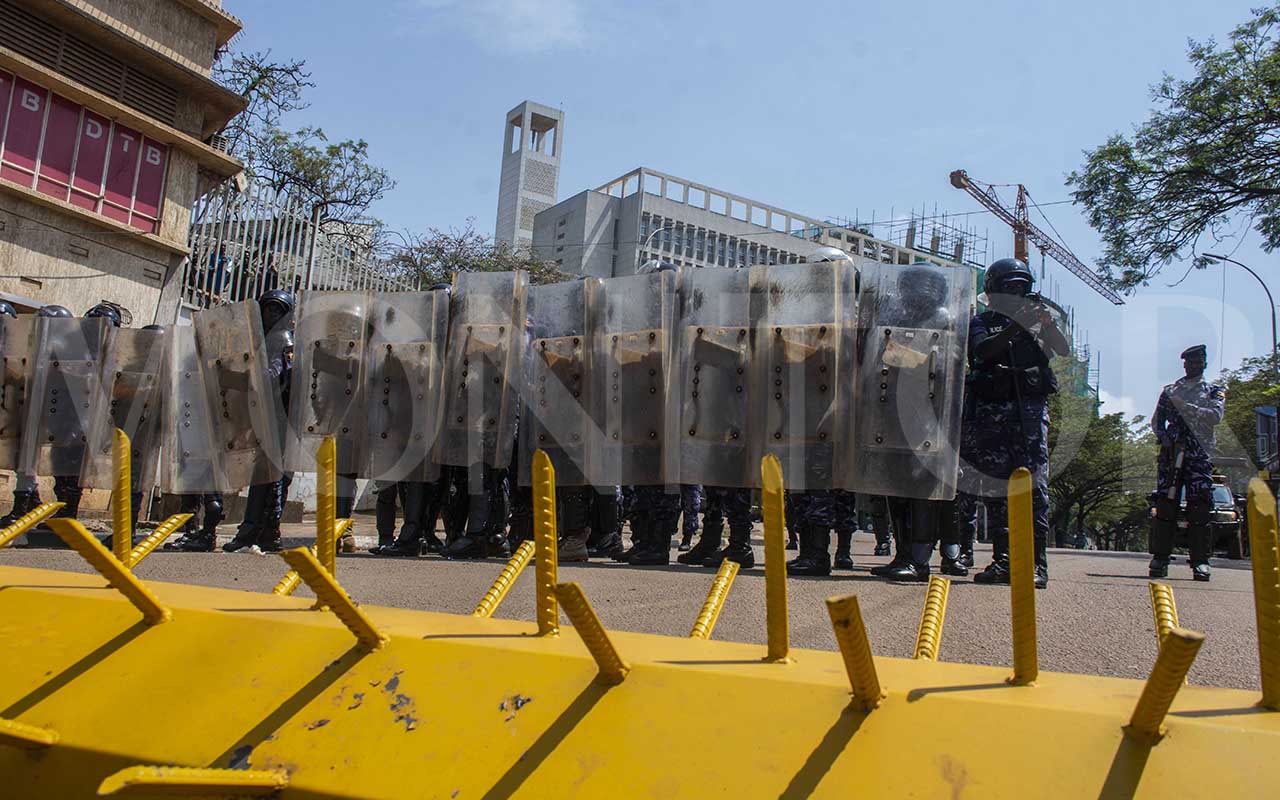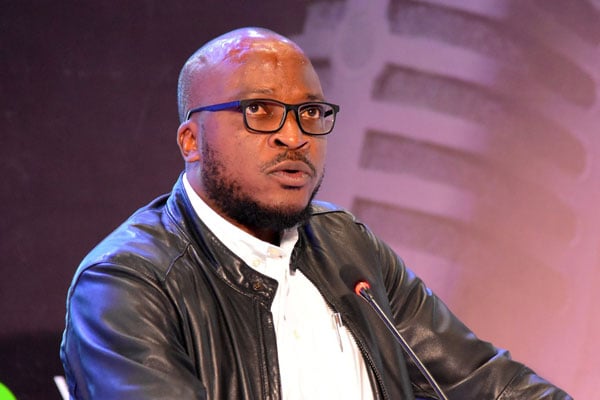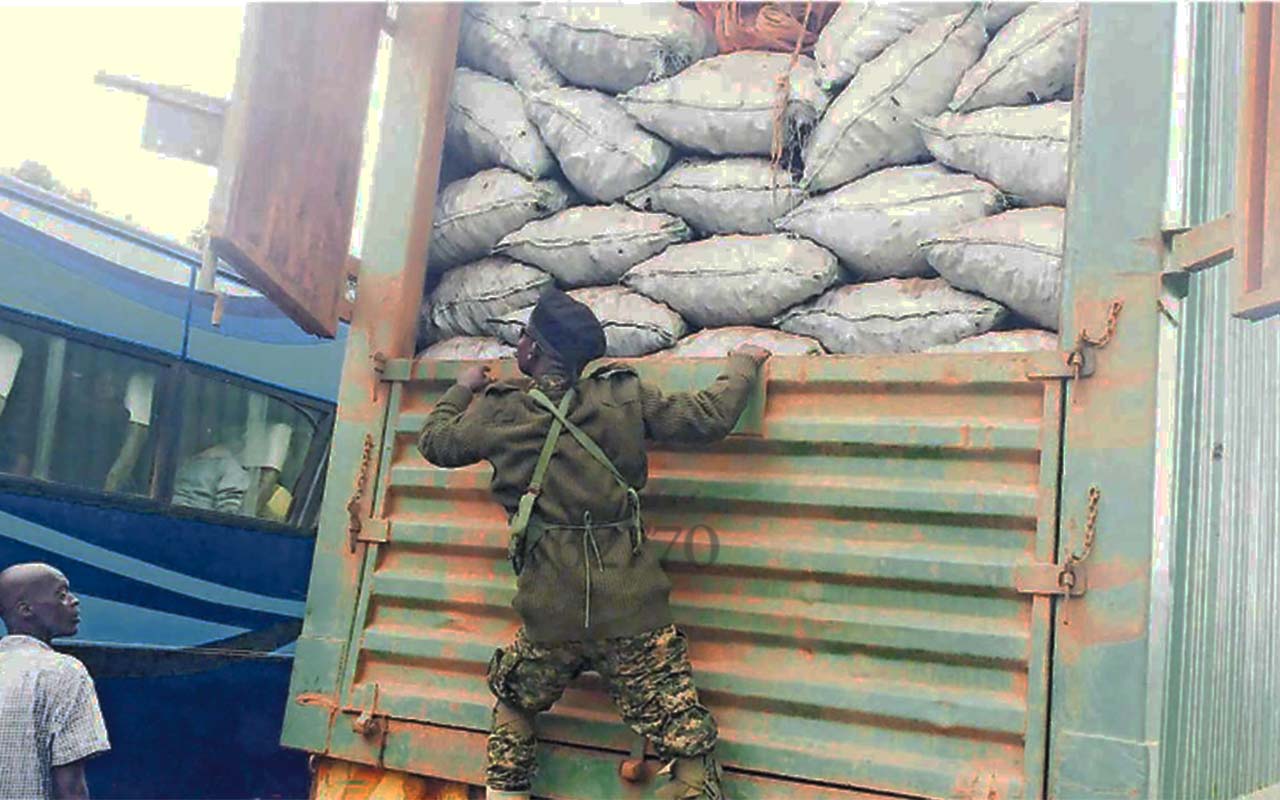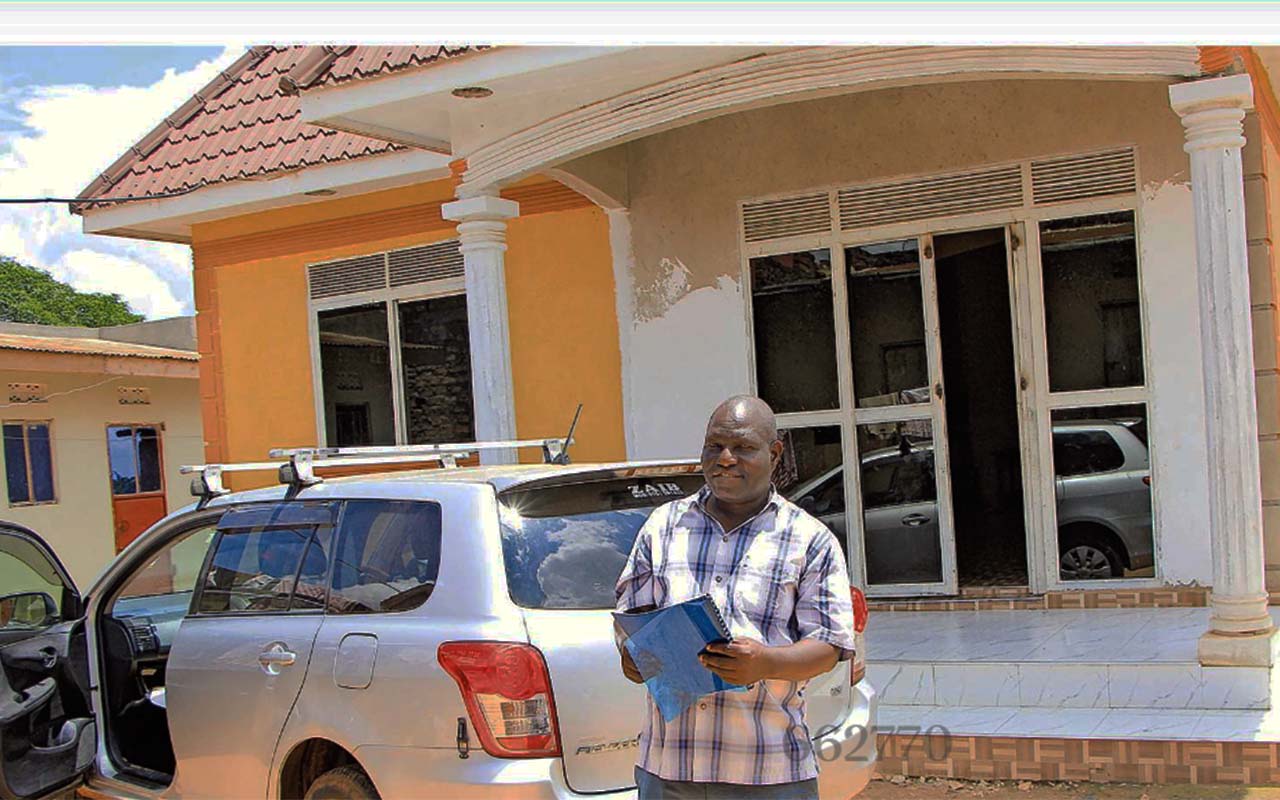
A plain-clothed security operative drags a female protester during anti-corruption protests in Kampala on July 23, 2024. PHOTO | ABUBAKER LUBOWA
At around midday on Tuesday, a dark-blue Uganda Police Force (UPF) van filled with regular police officers was seen parked in-front of Parliament’s main gate.
Its commander ordered it to be driven straight to ESO House on Dewinton Rise, about 100 metres away.
At ESO House is where other security operatives, including police’s Field Force Unit (FFU), Military Police, Counter Terrorism and traffic officers had staged the barricades, prohibiting people from accessing Parliament from that side.
More officers from the FFU, who had been stationed at the upper gate of the sealed-off Uganda National Cultural Centre (UNCC, formerly National Theatre), joined their colleagues, attracting the attention of more journalists, who were covering the foiled anti-corruption march to Parliament on July 23.
Minutes later, the mobile police cell also arrived at the scene with its driver keeping the engine running, a clear sign that the converged officers were expecting some unwelcome people.
Other officers had an hour earlier arrested more than 10 youth protesters at Nkrumah Road, who had emerged from one of the buildings at Nasser Road.
The group walked while displaying placards and shouting: ‘Anita must resign,’ for more than 10 minutes from Printer’s Miracle Arcade, almost up to the Railway Grounds before branching upwards to Nkrumah Road, where they were intercepted by Military Police.

A female protester is hauled onto a military pick-up truck during the anti-corruption demonstrations in Kampala on July 23, 2024. PHOTO | MICHAEL KAKUMIRIZI
The protesters were led by David Musiri.
More panic had engulfed the security forces because more five protesters led by Kfm Radio Presenter Faiza Salima, popularly known as Faiza Fabz, had been arrested as they walked from Oasis Mall.
Although the protests had been designed like those in the neighbouring Kenya with no leader, four youth, including former Makerere University guild president Shamim Nambasa, a 24-year-old technician; George Oteino, Kennedy Ndyamaki Makana, and Praise Opolose, a law student, had offered leadership through mobilising their colleagues on the microblogging online platform X (formerly Twitter).
Before making their move, Opolose informed this publication in the morning that the earlier plans of converging at Railway Grounds before marching towards the highly-guarded Parliament building, had been abandoned after heavy security deployment.
“What I can assure you is that we are coming,” she said, adding: “We are going to come from different directions because the earlier plan of converging in one place has been compromised.”
Although the commanders beefed up the Dewinton Rise security earlier enough, the protesters, some of who even outsmarted the security personnel and crossed the barricades towards the Parliament main gate, did not show up faster. But as earlier predicted by police, Otieno, Makana, and Opolose, joined by five more youth, marched to Parliament using this route.
These moved up to the barricades before the officers, who had relaxed, noticed and immediately swung into action to intercept them. They shoved them into a waiting mobile police cell and drove straight to the Central Police Station.
A few minutes later, another former Makerere University guild president, Salim Were, showed up with another protester in the same spot, and the duo was arrested.
Mr Were, popularly known as Papa, greeted the protesters and said: “I am here to meet Anita so she can resign peacefully.”
He then pulled out a small placard with inscriptions: “Anita Must Resign” and began chanting “Anita must resign.” The officers deployed at the entrance to the Parliament building seemed not to understand what exactly Were was addressing journalists about.
After a few minutes, three officers stationed at the entrance of Parliament marched slowly and approached Were. He was put in a police car, which later drove him to a police van parked at the entrance of the National Theatre.
Were was very calm and did not resist his arrest.
“Allow me to come down slowly,” he said as the policemen jerked him out of the police car.
A few minutes later, another protester outsmarted security operatives, manoeuvered through the barricades and demonstrated a few metres from the highly guarded Parliament main gate.
The protester, who identified himself as Eriah Nuwenuwe, a human rights lawyer, first had a brief chat with news reporters at ESO House on Dewinton Road.
“If I wait for my colleagues to come, they will delay me,” he said as he grabbed the nearby placard and wrote their day’s slogan ‘Anita must resign.’
He added: “It is our turn now. I need journalists only here. Journalists join and we march to Parliament. I don’t want the police. Anita must resign. We are tired of corruption in this Parliament. At the end of the day, it is us young people suffering,”
The arrested ringleaders are among the more than 50 suspected protesters who were arrested and charged in different courts of law with public nuisance.
Security deployment
Operatives drawn from the military, police and intelligence agencies marshalled in the city centre and its outskirts, which in the past were flash points for anti-government demonstrations.
Armed to the teeth with AK-47 assault rifles and more sophisticated guns, the uniformed and non-uniformed officers ringed off roads, crucially those leading to Parliament building on Parliamentary Avenue.
Armoured cars patrolled the capital in which teargas trucks were positioned at main road intersections a day earlier to confront demonstrators.
Compiled by: Busein Samilu, Karim Muyobo and Damalie Mukhaye
